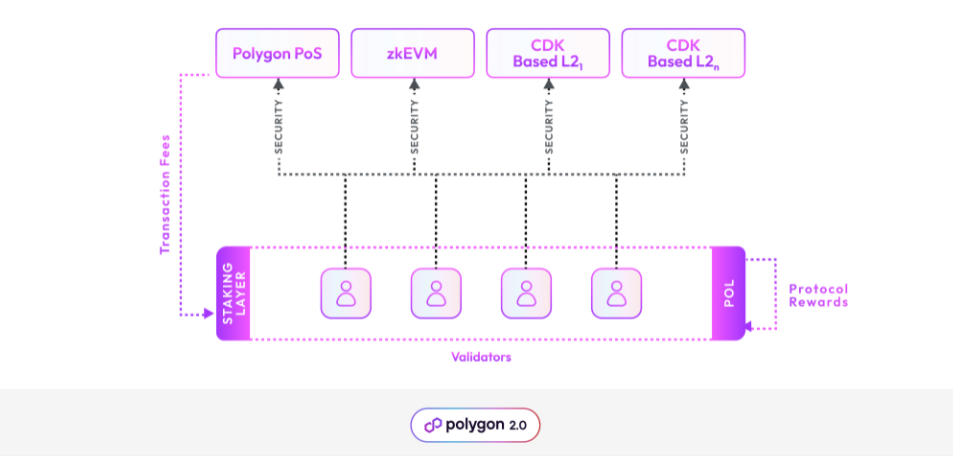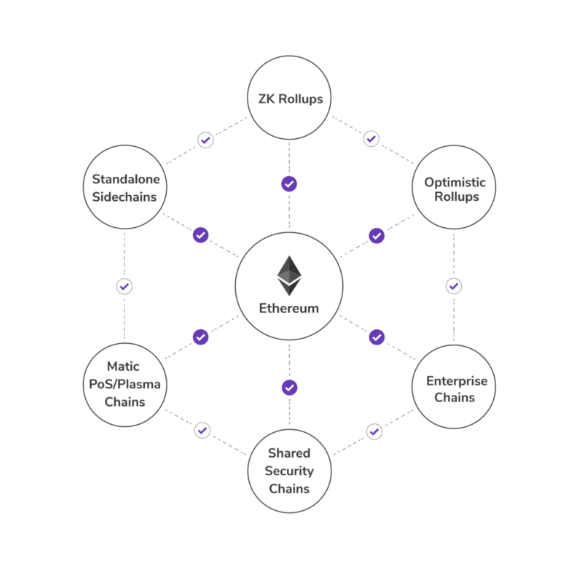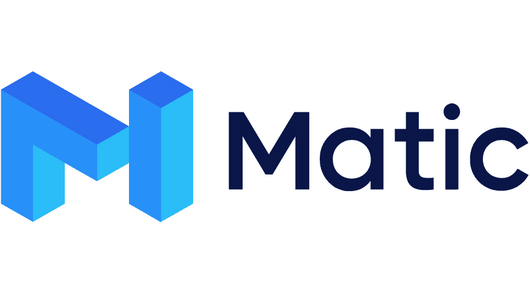
Polygon, MATIC, POL, Polygon Labs; it can be hard to keep up with this crypto’s endless name changes. Originally one of the most popular and widely used Ethereum scaling solutions, Sandeep Nailwal’s blockchain company has been known under various names in its quest for supremacy.
Of course, part of the confusion surrounding Polygon names is due to the staggering variety of protocols within the Polygon ecosystem. While the Matic network initially launched as a layer 2 solution and Ethereum (ETH) sidechain, Polygon Labs has dramatically expanded its vision.
Sponsored
What are the inspirations behind Polygon names, and why has the company reinvented itself on not one but two occasions?
Table of Contents
What is Polygon?
Polygon Labs is a blockchain company that builds a scalable, thriving ecosystem of interconnected sovereign blockchains. Originally, Polygon Labs was mainly focused on scaling the Ethereum network through its flagship platform, the Polygon PoS (Proof-of-Stake) sidechain. However, the team’s blistering success has allowed them to expand their offerings.

The Polygon ecosystem goes far beyond its original Ethereum Layer-2. These days, Polygon also specializes in various vectors of blockchain technology, including EVM-equivalent zk-rollups (zero-knowledge), plasma chains, and decentralized applications. It even offers a CDK (Chain Development Kit) that allows companies to build their own blockchain networks.
Sponsored
But many newcomers to the crypto world won’t know that Polygon used to be known by a different name.
Polygon (MATIC) Name History
Have you ever wondered why the native token of the Polygon is called MATIC instead of something like POLY? The truth is that Polygon Labs has undergone a few name changes in its short lifespan, causing confusion and inconsistencies in its branding.
MATIC Launch
When Polygon Labs was founded in 2017, it was originally called the Matic Network. Designed as a simple sidechain meant to scale the Ethereum mainnet and provide dApps, DeFi smart contracts, and NFT functionalities with dramatically reduced transaction fees.
Matic was founded by Sandeep Nailwal, Jaynti Kanani, Anurag Arjun, and Mihailo Bjelic, four talented software engineers based in Mumbai. After three years of development, the Matic’s main chain finally went live on March 30, 2020.
Over the next year, the Ethereum-compatible network proved a capable scaling solution. Matic’s flagship product used the PoS consensus mechanism powered by validator nodes to process transactions, while its use of the EVM (Ethereum Virtual Machine) meant that on-chain activities looked almost identical to what users might find on Ethereum.
This served a dual purpose. Developers liked the Matic network because they could easily port over their existing Ethereum-based contracts to the platform, while end-users loved its scalability and low gas fees.
But as 2021 rolled around, the Matic team wasn’t content managing only one network. They needed a new name that reflected their loftier ambitions.
Polygon Network Rebrand
With the 2021 crypto bull run picking up speed, the Matic team had already shifted its focus away from plasma sidechains. It pushed the boundaries of what we knew possible in the cryptocurrency industry.
In February 2021, the Matic network announced that it was expanding its vision. The team recognized that the Layer 2 race was not a winner-takes-all game, and different areas of the wider Ethereum blockchain had different requirements.

Matic needed to expand its horizons, so it turned its attention to dozens of other verticals in the crypto space. This included developing zero-knowledge technology, enterprise-level private chains, Optimistic Roll-ups, SDKs (Software Development Kit), CDKs, and the Polygon Bridge.
Coinciding with the new vision, the company announced that it would be rebranded from Matic to Polygon Labs. The new name was inspired by the Greek words ‘poly’, meaning many, and ‘gon’, meaning sides and angles. In a clever twist of poetry, Polygon’s new name reflected its new vision and aimed to expand the possibilities of blockchain technology from a range of new angles.
$MATIC, or $POL?
At the time of the rebrand, the MATIC token was still heavily involved in all Polygon Labs’ products, including the Polygon blockchain. To aid in the transition and rebrand process, Polygon Labs decided against immediately changing the name of the MATIC token.
Fast-forward a few years, and Polygon Labs is preparing for a dramatic token migration. In line with the rollout of Polygon 2.0, an upgraded suite of all Polygon Labs products and services, the team has opted to transition to a new native token for their entire ecosystem.
Proposed as a ‘hyperproductive token,’ POL promises to bring greater security and scalability to the Polygon ecosystem. MATIC holders will have four years to migrate their existing MATIC tokens to the new contract, exchanging MATIC for POL at a 1:1 ratio.
Polygon Labs Logos
As you can imagine, the rebrand from Matic to Polygon Labs also required a facelift for brand imagery and logos.
MATIC Logo
The original MATIC logo was immediately recognizable thanks to its deep blues and strong, geometric ‘M’ shape.

The color scheme permeated much of Matic’s early branding, symbolizing trust and stability.
Polygon Logo
Following the rebrand in 2021, the Matic logo metamorphosed from a solid, blue ‘M’ into something more abstract.

Polygon Labs’ new logo adopted a purple color scheme and presented two hexagonal shapes tied together to resemble an overlapping infinity symbol.
On the Flipside
- Polygon Labs rose to prominence when Layer 2 solutions were thin on the ground. These days, Polygon faces stiff competition from other Ethereum L2s like Arbitrum and Optimism, as well as a raft of zk-rollups.
Why This Matters
The token migration from MATIC to POL is likely to be a popular attack vector for hackers and scammers. Please ensure you stay informed on the process and only trust official sources.
FAQs
You can buy Polygon (MATIC) on top crypto exchanges like Binance and Coinbase.
Polygon Labs is the rebranded name of the company behind the Matic network, meaning that they’re essentially the same thing.

